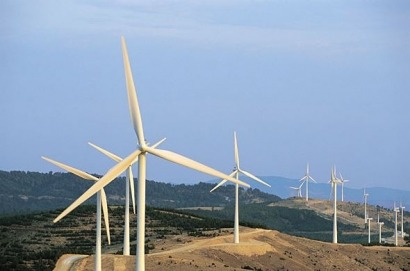
On December 31st total accumulated power in the sector stood at 22,959 MW, the organization said.
This installed power is 2,000 MW below the 24,988 MW envisaged in the Renewable Energies Plan (PER) 2011-2020, approved by the Cabinet on November 11th 2011 to meet European Directive 28/2009 on renewable energies.
The report dated December 17th of last year by the CNMC about the draft Royal Decree on renewables, cogeneration and waste indicates that “certain technologies have far outperformed the targets”, one of the reasons why it justifies to further reduce the compensation of the existing facilities. Self-evidently, this is not the case of wind energy.
The 175 MW installed last year correspond to the latest stings in the tail of the Preallocation Register, the quota set in 2009 by the Government so that only the new farms registered could then receive the compensation foreseen in Royal Decree 661/2007.
Notwithstanding, the companies owning 928 MW of that enrolled on said Register have refused to install this power as, owing to the new regulation pending approval in the Energy Reform, major legal insecurity has been generated. In the wake of these refusals, there remains 177 MW yet to be installed and registered on the Preallocation Register which has not specifically refused the construction. The companies will take a decision once the detail of the Energy Reform is known.
Although this Register – created under RDL 6/2009 – ensured the right of farms to charge a certain amount of compensation for 20 years, things have turned around. The Energy Reform dictated by the Government eliminates the rights acquired by the existing installations and imposes a new compensation system on them.
At present, it is impossible to predict the economic impact that the reform will have on the sector as we are still awaiting the Ministerial Order which will set the parameters that form the basis for stipulating the new economic conditions.
Notwithstanding, the changes already made in Royal Decree 9/2013, Law 24/2013 regarding the Electrical Sector (already in force) and the draft Royal Decree on renewables (pending approval) - along with the economic impact of other standards not related with the wind sector but which will entail an economic loss (such as the Interruptability Order and the draft Royal Decree on capacity payments) - it is estimated that the impact will be disproportionate and will have devastating effects on the sector. Hence, the refusal to install new farms even though they are registered and the companies have already invested money in them.
The balance by regions
According to data obtained by AEE, which monitors all the companies in the sector in Spain and uses the criterion of the final operational act to make its calculations, the region where the most megawatts were installed in 2013 was Andalusia.
The developer that installed the most power in 2013 was Enel Green Power (with 88.27 MW), followed by Acciona Energía, EDPR and Gamesa.
In terms of manufacturers, the wind turbines of Gamesa totalled the most power (85.50 MW), followed by those of Acciona Windpower (70.50 MW).
Despite this insignificant increase in power in 2013, for the first time in history wind energy took its place as the no. 1 source of electricity in Spain in a full year, accounting for 20.9% of demand according to data from the Spanish System Operator -REE. Spain is the first country in the world where this has occurred. However, according to AEE estimates based on the data made available by CNMC and REE, wind energy incentives represented only 11.4% of the total regulated costs of the electrical system in 2013 and they received 25% of the incentives under the Special Regime.
This data bears testimony to the seriousness and thoroughness with which the wind sector has developed in Spain – always in accordance with the objectives of the regulator – until becoming the no.1 technology in the system, entailing a cost which is always controlled and efficient. This is why AEE thinks the regulatory mistreatment of the sector in the context of the Energy Reform is incomprehensible and it never tires of reaching out to the Government to get round the situation and work towards a standard that ensures the survival of a key industrial sector for Spain which is admired worldwide.
For additional information:

